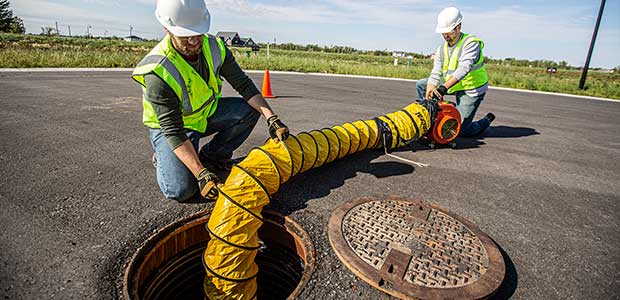Tag: confined spaces
Ways to Conduct a Risk Assessment Before Entering a Confined Space
- by Helen Cotter
Working in confined spaces can be hazardous, so conducting a thorough risk assessment before entry is essential. A confined space is any area not designed for continuous human occupancy with restricted entry or exit points. Sydney confined space entry & rescue training teaches how these spaces often present risks that can endanger workers if not properly addressed. Conducting a risk assessment identifies potential dangers and helps establish safety procedures to mitigate those risks. This article outlines how to conduct a comprehensive risk assessment before entering a confined space.
Identifying the Confined Space and Potential Hazards
The first risk assessment step is identifying the confined space and understanding its unique hazards. Each confined space is different, and the risks involved depend on factors such as its size, structure, and the nature of the work. Some common hazards associated with confined spaces include oxygen deficiency, the presence of harmful gases, electrical hazards, and the potential for engulfment. A thorough inspection of the confined space should be conducted to assess these risks. For instance, if the confined space has poor ventilation, the buildup of toxic gases like carbon monoxide or hydrogen sulfide could pose a threat. Similarly, spaces like grain silos or water tanks may present engulfment risks, where workers could be buried or submerged. Documenting all potential hazards is key to creating a safe work plan.
Evaluating the Atmosphere
One of the most critical elements of a confined space risk assessment is evaluating the atmosphere within the space. Poor air quality is a common hazard in confined spaces and can lead to suffocation or poisoning if improperly managed. The air in a confined space should be tested for oxygen levels as well as the presence of hazardous gases or vapors. This is usually done using gas detectors or monitors that measure oxygen concentration, combustible gases, and toxic substances. According to safety guidelines, the oxygen concentration should be between 19.5% and 23.5%. Anything outside of this range indicates a dangerous environment. If harmful gases are detected, appropriate measures, such as ventilation or the use of respirators, should be implemented before workers enter the space. Regular atmospheric testing is necessary throughout the work to ensure ongoing safety.

Assessing Entry and Exit Points
Confined spaces often have limited entry and exit points, posing significant emergency challenges. A risk assessment should evaluate whether the space allows for safe and easy access, particularly in the event of a rescue. Restricted entry points can make it difficult for workers to exit quickly or for rescuers to reach them in case of an accident. It is crucial to develop a rescue plan that accounts for the unique configuration of the confined space.
Establishing a Monitoring System
Continuous monitoring of the confined space during work activities is essential for maintaining a safe environment. The risk assessment should outline the need for an attendant to be stationed outside the confined space at all times. This person monitors the workers inside, communicates with them, and initiates emergency procedures if necessary.
Implementing Emergency Procedures
No risk assessment is complete without a detailed emergency response plan. Even with all precautions in place, emergencies can still happen, and it’s essential to have a clear plan of action. This includes specifying evacuation routes, emergency equipment, and the roles of personnel during a rescue operation. Regular drills can also help familiarize workers with the steps to take in the event of an emergency, minimizing panic and confusion.
Conclusion
Conducting a thorough risk assessment before entering a confined space is vital for ensuring worker safety. By identifying hazards, evaluating the atmosphere, assessing entry and exit points, and implementing continuous monitoring and emergency procedures, workers can perform their tasks in a safer environment. Effective risk assessment not only prevents accidents but also provides a framework for responding swiftly in case of an emergency. This proactive approach ensures workers are well-prepared and protected when working in confined spaces.…
Read MoreSearch
Follow us
Pages
Recent Posts
 Ways to Conduct a Risk Assessment Before Entering a Confined Space
Ways to Conduct a Risk Assessment Before Entering a Confined Space Factors That Can Affect a Music Artist’s Career
Factors That Can Affect a Music Artist’s Career 4 Ideas to Strengthen Your Bond With Your Son
4 Ideas to Strengthen Your Bond With Your Son The Road to Credit Recovery: A Step-By-Step Guide to Repairing Your Credit Score
The Road to Credit Recovery: A Step-By-Step Guide to Repairing Your Credit Score Warning Signs Your Computer Is Going to Crash
Warning Signs Your Computer Is Going to Crash Tips to Get Your Payday Loan Approved
Tips to Get Your Payday Loan Approved Mental Health: How It Affects Overall Health
Mental Health: How It Affects Overall Health










